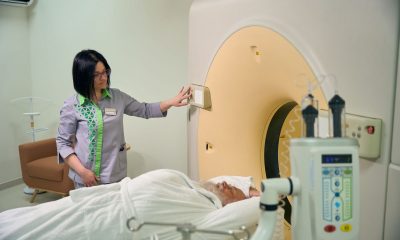Sciatica
Can Sciatica Be Cured by Exercise?

Sciatica is a condition that can cause pain, tingling, and numbness in the lower back and legs. While there is no one-size-fits-all cure for sciatica, many people find relief by incorporating exercise into their treatment plans. Exercises that stretch and strengthen the muscles in the back and legs can help to ease the pain of sciatica.
Read More About Can Sciatica Be Cured by Exercise

More Things To Know About Can Sciatica Be Cured by Exercise
A healthcare professional can help you develop an exercise plan that is right for you. In some cases, surgery may be necessary to relieve the pressure on the sciatic nerve.
However, exercise is often a successful treatment for sciatica and can help to prevent the condition from returning.
What Causes Sciatica and How Is It Diagnosed?

Sciatica is a condition that can cause pain, tingling, and numbness in the lower back and legs. The pain is often caused by pressure on the sciatic nerve, which runs from the back of the pelvis down the leg. The condition is most commonly caused by a herniated disk in the lower back or by a condition called spinal stenosis, which is a narrowing of the space around the spinal cord. Sciatica can also be caused by pregnancy, tumors, and other conditions that put pressure on the sciatic nerve.
Sciatica is typically diagnosed by a physical exam and a review of your medical history. Your doctor may also order imaging tests, such as an MRI, to rule out other conditions. Treatment for sciatica often includes a combination of self-care measures, such as exercise and heat therapy, and medical treatments, such as oral steroids or epidural injections. Surgery is only rarely necessary.
How Can Stretching the Sciatic Nerve Help With Sciatica?
Sciatica is a painful condition that affects the sciatic nerve, which is the largest nerve in the body. The sciatic nerve starts in your lower back and runs through your buttocks and down the back of each leg. Sciatica can cause pain, tingling, numbness, or weakness in one or both legs.
One way to reduce pain from sciatica is to stretch the sciatic nerve by doing exercises that target the lower back and hips. These include hip extensions, bridges, hamstring curls, and pelvic tilts.
What Are Some Exercises That May Help Relieve Pain From Sciatica?
There are many different exercises that may help relieve pain from sciatica. One of the most common is called the “cat-camel” exercise. This exercise involves going from a seated position to a kneeling position and then back to a seated position. This can be done over and over again for 10 minutes.
The second exercise is called “the pelvic tilt”. This is done by lying on your back with your knees bent, your feet flat on the floor, and your hands resting at your sides. You then tighten or squeeze the muscles in your buttocks, thighs, and stomach for 10 seconds before releasing them 10 seconds. The movement should be done repetitively, about 10 times for 10 seconds each.
The third exercise is a squat thrust where you stand with your feet shoulder-width apart and your arms by your sides. You then bend at the knees to lower your body until it comes close to touching the floor, and then you push back up to a standing position, inhaling deeply throughout the movement.
How Can Exercise Cure Sciatica?
Exercise is an effective way to relieve sciatica pain. It can be as simple as walking or stretching. Exercise helps to reduce the pressure on the sciatic nerve and improve circulation in the area.
The best exercise for sciatica is one that does not cause pain in other areas of your body. A physical therapist can recommend a safe exercise for you if you are unsure what to do on your own.
How Can Exercise Help to Relieve the Pain of Sciatica?
Exercise is often a successful treatment for sciatica and can help to prevent the condition from returning. There are many different exercises that can help to relieve the pain of sciatica, including stretching exercises, strengthening exercises, and Pilates. It is important to consult with a healthcare professional before starting an exercise program to ensure that you are doing the right exercises for your condition.
Stretching exercises can help to loosen the muscles around the sciatic nerve and relieve pressure on the nerve. Strengthening exercises can help to support the back and provide pain relief. Pilates is a type of exercise that can help to strengthen the core muscles, which can also help to ease the pain of sciatica.
There are many different exercises that can help to relieve the pain of sciatica, including stretching exercises, strengthening exercises, and Pilates. It is important to consult with a healthcare professional before starting an exercise program to ensure that you are doing the right exercises for your condition.
When Should You See a Healthcare Professional About Your Sciatica?
If you are experiencing any of the symptoms of sciatica, it is important to see a healthcare professional for diagnosis and treatment. The sooner you seek treatment, the more likely you are to find relief from the pain of sciatica. Some symptoms that may require prompt medical attention include:
• Severe pain that does not improve with self-care measures
• Numbness or tingling in the legs or feet
• Weakness in the legs
• Loss of bowel or bladder control
If you are experiencing any of these symptoms, please see a healthcare professional right away. Sciatica is a condition that can often be treated successfully with self-care measures and/or medication, but it can occasionally require surgery.
Are There Any Risks Associated With Exercising With Sciatica?
While there are many benefits to exercising with sciatica, there are also some risks associated with the condition. It is important to consult with a healthcare professional before starting an exercise program to ensure that you are doing the right exercises for your condition. Some risks associated with exercising with sciatica include:
• Increased pain
• Increased inflammation
• Worsening of the condition
If you experience any of these risks while exercising, it is important to stop the activity and consult with your healthcare professional. They may recommend changing your exercise routine or discontinuing exercise altogether.
What Are Some Other Treatments for Sciatica That Don’t Involve Exercise?
Other treatments for sciatica that don’t involve exercise include:
• Medications, such as oral steroids or epidural injections
• Physical therapy
• Chiropractic care
• Acupuncture
Each of these treatments has its own benefits and drawbacks, so it is important to discuss them with your healthcare professional to see if they are right for you.
Conclusion
Sciatica is a condition that can cause pain, tingling, and numbness in the lower back and legs. While there is no one-size-fits-all cure for sciatica, many people find relief by incorporating exercise into their treatment plans. Exercises that stretch and strengthen the muscles in the back and legs can help to ease the pain of sciatica. If you are experiencing any symptoms of sciatica, it is important to see a healthcare professional for diagnosis and treatment.

























